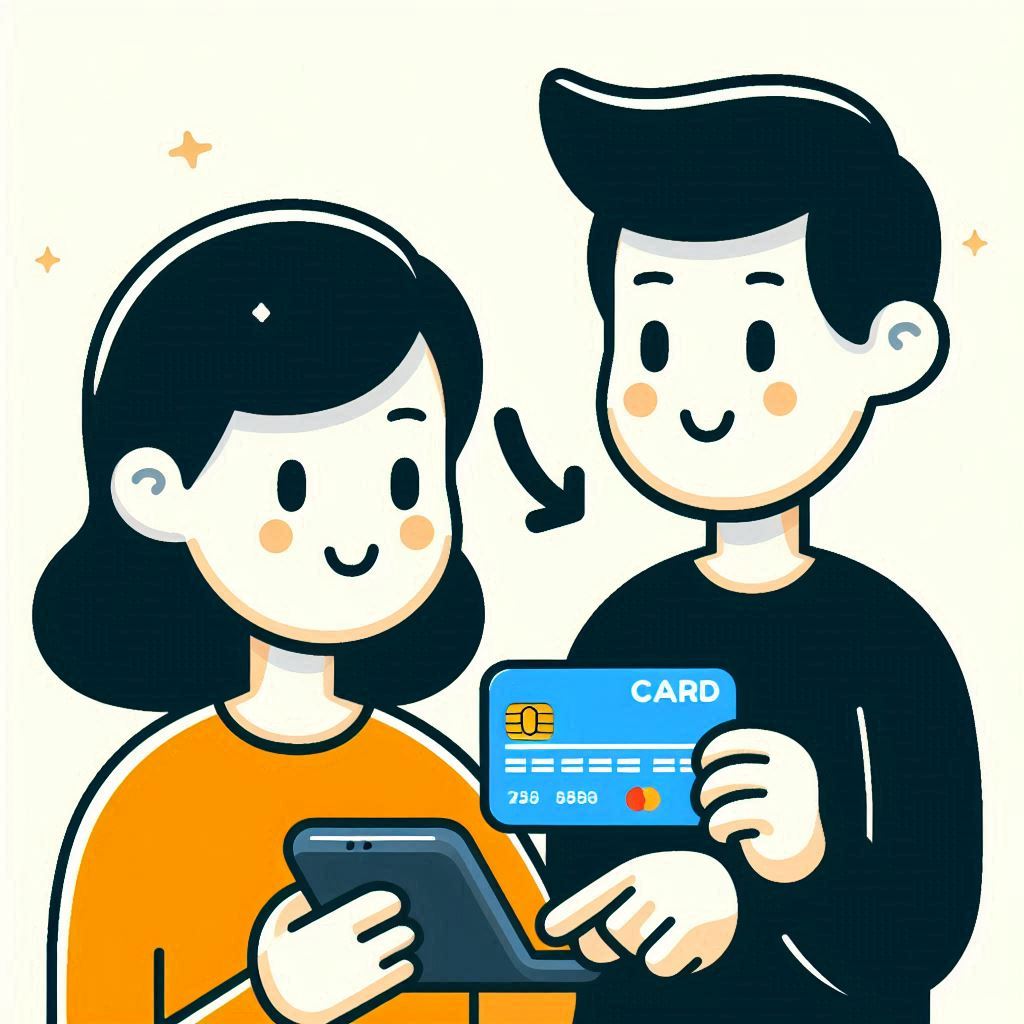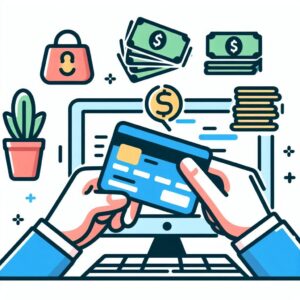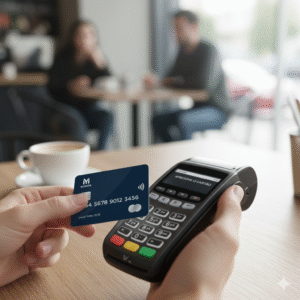Is it worth using virtual credit cards?

In an age where our financial lives are increasingly lived online, the security of our payment information has never been more critical. We shop on countless websites, sign up for free trials, and manage a dozen different monthly subscriptions. Each transaction, however, carries a risk. A single data breach at a retailer you used once years ago could expose your physical credit card number to fraudsters, leading to unauthorized charges and a major headache.
Enter the virtual credit card, a powerful and increasingly popular tool designed specifically for the digital age. But what exactly is it, and how does it work? Is it a gimmick, or is it an essential upgrade to your financial security toolkit?
This comprehensive guide will explore the world of virtual credit cards. We will explain how they function, detail their significant security advantages, weigh their pros and cons, and show you how to start using them. By the end, you’ll understand why this innovative technology is rapidly becoming a must-have for savvy, security-conscious consumers.
What Exactly is a Virtual Credit Card and How Does It Work?

A virtual credit card (also known as a temporary card number or a digital card) is a randomly generated, unique credit card number that is linked to your actual credit card account but masks your real number. Think of it as a secure alias or a digital middleman for your transactions.
When you need to make a purchase online or over the phone, your credit card issuer or a third-party service can instantly generate a new 16-digit card number, expiration date, and CVV code. You then use this temporary number to complete your purchase, just as you would with a physical card. The charge is processed through this virtual number and then appears on your primary credit card statement like any other transaction.
The key takeaway is that the merchant never sees or stores your actual, physical credit card details. This simple but powerful layer of separation is the foundation of the virtual card’s security benefits.
There are generally two types of virtual credit cards:
- Single-Use Cards: These numbers are designed to be used only once and expire immediately after the transaction is completed or within 24 hours. They are perfect for making a one-time purchase from a website you’re not familiar with or don’t fully trust.
- Recurring-Use Cards: These numbers can be used multiple times and are ideal for managing ongoing subscriptions. You can generate a specific virtual card for each service (one for Netflix, one for your gym membership, one for your newspaper subscription, etc.). This allows you to set specific spending limits or “lock” the card to a single merchant.
The #1 Benefit: A Massive Upgrade in Financial Security
The primary reason to use a virtual credit card is to dramatically enhance your security and protect yourself from fraud. Here’s how it accomplishes this.
Protection from Data Breaches
Major data breaches have become a common headline, with hackers stealing millions of customer credit card numbers from large, reputable companies. If your physical card number is stolen in a breach, it’s a free-for-all for fraudsters. You have to monitor your account, dispute fraudulent charges, and wait for a new card to be mailed to you.
If a virtual card number is stolen in a breach, the risk is almost completely neutralized.
- If it was a single-use number, it’s already expired and useless to a thief.
- If it was a recurring-use number, you can simply cancel that specific virtual number in seconds without affecting your primary account or any of your other subscriptions. Your physical card remains secure and active.
Safe Online Shopping on Unfamiliar Sites
Ever found a great deal on a website you’ve never heard of but felt hesitant to enter your credit card information? A virtual credit card is the perfect solution. By using a disposable, single-use number, you can make the purchase with confidence. Even if the website turns out to be insecure or a scam, your real financial information is never exposed.
Preventing Unauthorized Subscription Charges
The “free trial” is a common marketing tactic. You sign up with a card, forget to cancel, and then get hit with an unexpected charge. With a virtual card, you can take back control. You can generate a number with a specific spending limit (e.g., $1) and a short expiration date. When the free trial ends and the company tries to charge the full price, the transaction will be declined, effectively canceling the service for you.
Gaining Unprecedented Control Over Your Subscriptions

Beyond security, virtual cards offer a revolutionary way to manage your recurring payments and combat “subscription creep”—the gradual accumulation of monthly charges you forget about.
Isolate and Organize Your Payments
By assigning a unique virtual card number to each of your subscriptions (Spotify, Hulu, Amazon Prime, etc.), you can see exactly where your money is going each month. More importantly, you gain granular control.
Let’s say a streaming service unexpectedly increases its monthly fee. Instead of going through their website’s cancellation process, you can simply log in to your credit card portal and cancel the specific virtual number associated with that service. The next time they try to charge the card, it will be declined, and your subscription will be effectively terminated. This puts the power to end a service firmly in your hands.
Set Custom Spending Limits
Many virtual card services allow you to set a spending limit for each card you create. This is an excellent tool for budgeting and preventing overcharges. For a service that costs $15.99 a month, you can set the monthly limit on its virtual card to $16.00. This ensures the company can never charge you more than the agreed-upon price without the transaction being declined.
How Do You Get and Use a Virtual Credit Card?
Accessing virtual card technology has become increasingly easy. There are two primary sources:
1. Major Credit Card Issuers
Many of the largest banks and credit card issuers now offer a virtual card feature as a free, built-in benefit for their cardholders. The process is typically seamless:
- Log in to your credit card account online or through the mobile app.
- Navigate to a section often labeled “Virtual Card Numbers,” “Digital Cards,” or something similar.
- Generate a new number with just a click. You’ll often have the option to set a custom spending limit or an expiration date.
- Copy and paste the new number, expiration date, and CVV into the payment fields of the online store.
Prominent issuers offering this service include Capital One (Eno), Citi, and American Express. It’s worth checking your specific card’s benefits to see if this feature is available to you.
2. Third-Party Services
There are also dedicated financial technology companies that provide virtual card services. These platforms connect to your bank account and allow you to create and manage virtual cards, often with more advanced features than what the big banks offer. Some of these services may charge a fee, but they can provide an extra layer of budgeting tools and control.
Do Virtual Credit Cards Have Any Downsides?
While the benefits are substantial, there are a few potential limitations and drawbacks to consider.
- In-Person Transactions: Virtual cards are designed for online or “card-not-present” transactions. They generally cannot be used for in-person purchases at a physical store (though some can be added to mobile wallets like Apple Pay or Google Pay).
- Returns and Refunds: Processing a return can sometimes be slightly more complicated. If a merchant tries to refund a purchase to a single-use virtual card that has already expired, it may require a call to customer service to sort out. However, most modern systems are able to trace the refund back to your primary account without issue.
- Hotel and Rental Car Holds: Services like hotels and rental car agencies often need to place a temporary hold on your card for incidentals. Using a virtual card with a strict spending limit can interfere with this process. It’s usually best to use your physical card for these types of reservations.
- Not All Issuers Offer Them: While becoming more common, the feature is not yet universal. Your specific bank or credit card may not yet provide a native virtual card service.
Answering Your Top Questions About Virtual Cards

Do I still earn rewards on purchases made with a virtual card?
Yes, absolutely. Since the virtual number is just a proxy for your main account, any purchase made with it will earn the same cash back, points, or miles that your physical card earns.
Does using a virtual card affect my credit score?
No. Using a virtual card has no impact on your credit score. All transactions are reported to the credit bureaus as if they were made with your primary card, so you continue to build your payment history as usual.
Is it complicated to keep track of all the different numbers?
No. The providers of these services have user-friendly dashboards that neatly organize all of your virtual cards. You can label each one (e.g., “Netflix Subscription”), view its transaction history, and easily modify or cancel it at any time.
Is It Time to Start Using Virtual Cards?
For anyone who shops online or manages digital subscriptions, the answer is a resounding yes. The security benefits alone make virtual credit cards an invaluable tool in the fight against fraud. The ability to protect your primary account information from data breaches, shop safely on new sites, and control your subscriptions with precision offers a level of financial peace of mind that is hard to overstate.
While they may not be suitable for every single transaction, integrating virtual cards into your online spending habits is a simple, free, and incredibly effective step toward a more secure financial life. Check with your credit card provider today to see if this feature is available—it might just be the most important financial tool you’re not currently using.




